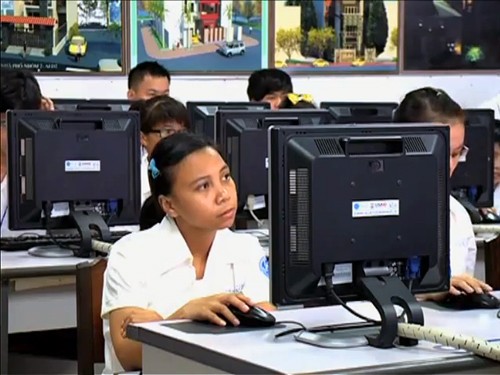
A long bout with high fever forever altered the course of energetic Trinh Thi Vuong's life at the tender age of two years. The eldest daughter of a poor family with five children from the ethnic minority Rac Lay group in Vietnam's southern province of Binh Thuan, Vuong's left leg became completely paralyzed. She spent her childhood with a wooden crutch, which she accepted as first. But as she grew up, the crutch gradually became a heavy burden for Vuong.
"My daughter was just like any kids of other families," said Vuong's mother. "But why couldn't she walk and run like others - she was sitting only in one place instead. We searched for cures everywhere to get her problem treated, but it didn't work."
With her family and health conditions, she became increasingly uncertain about her future and how she could fulfill her responsibilities to her family. She always wished that some sort of magic would happen to help her find her way in life.
And by chance, one day Vuong heard a radio program announcing a sponsored IT training program for people with disabilities in Van Lang University in Ho Chi Minh City with support from USAID and Catholic Relief Services (CRS). It did not take long before she enrolled in a course under the program. Vuong overcame lots of difficulties, including those of her own, to complete the IT training course, which lasted six months. Thankfully, after graduation, she managed to find a job in a large German software development company, which employs around 1,000 IT professionals in Vietnam alone.
"Vuong can accomplish her job duties as effectively as her teammates," her supervisor said about the performance at work.
"I am very happy now as I can make good use of the knowledge and skills that I acquired from the training course," Vuong said.
People with disability (PWD) account for around 15 percent of Vietnam's population. According to the International Labor Organization, Vietnam country loses around 3% GDP each year because of the PWDs' insufficient access to the labor market.
Since 2007, USAID and CRS have collaborated with the Hanoi College of Information Technology (ESTIH) and Van Lang University in Ho Chi Minh City to provide training in advanced computer skills, such as graphics design, 3D modeling and web development, for young people with disabilities from all over Vietnam. While studying IT skills, students also receive support for room and board, training in soft skills and job placement services.
To date, the program has trained more than 700 students with disabilities in Hanoi and Ho Chi Minh City, and over 80 percent of graduates have since found jobs. Training curricula are designed with extensive inputs from employers. Employers also team up with the training program to offer internships to help students gain additional hands-on experience.
Following the success of ITTP in Hanoi and HCMC, USAID and CRS has expanded this program to Danang to bring vocational training opportunities in advanced IT to central Vietnam.







Comment
Make a general inquiry or suggest an improvement.